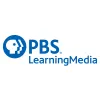Take a look inside 8 images
PBS LearningMedia
Pros: Material for almost any topic; potential to create new lessons with PBS content.
Cons: Lessons offered are often quite traditional; student experience isn't engaging.
Bottom Line: For teachers with time to sift through and adapt materials, PBS LearningMedia has a lot to offer with some highly useful support materials.
Most teachers using PBS LearningMedia will want to jump right into searching by topic and filtering by grade level, subject area, and resource type. Search for "climate change," and you'll get over 3,000 results, including those from the science program Nova, NPR, and collaborative projects from Michigan Environmental Education Curriculum Support and public broadcaster WGVU.
From there, teachers may have to do some sifting to find materials that will appeal to their students. Support materials like lesson plans and guiding questions are solid (but quite traditional). Take note that resources can also be downloaded and printed. If you find yourself wowed by the resources, it's probably time to sign up for an account so that you can save resources. Creating an account also gives you the ability to assign resources to students.
PBS LearningMedia's greatest potential innovative feature is the Lesson Builder tool, which allows teachers to weave PBS resources into new lessons that involve collaboration, creativity, and problem-solving. While this tool is pretty simplistic, it offers a lot of possibilities to take great PBS resources in new directions that better fit your curriculum. There are also other tools on offer to create quizzes, storyboards, and puzzles. Out of this batch, the storyboard tool is probably the most novel, but all of these tools are really about convenience, since there are better options on the market that teachers might already be using.
PBS LearningMedia is a massive, free, web-based collection of learning resources searchable by subject area, grade level (pre-K to 12), learning standard, local station, and more. With subjects ranging from science and math to world languages and health, the site draws on content from the many PBS affiliates and their programming. Much of the content comes with ready-made lesson plans and support materials (like extra readings or study guides) that can be used as-is in the classroom. PBS has also linked its content offerings to national and state standards (including content-area standards like the Next Generation Science Standards). Resources include videos, primary source documents, images, and audio recordings. The content offered on the site goes back quite a few years (Mister Rogers' Neighborhood, for example) and relates to specific topics in almost every subject area.
After creating an account, teachers can manage classes, save resources, and assign them to students. Teachers can assign lessons to students via social media, Remind, Google Classroom, Microsoft OneNote, or their PBS LearningMedia classroom. Students have their own view that highlights their active assignments and projects as well as resources they can browse and complete on their own. Within the teacher dashboard, teachers have the option to use a set of tools to adapt PBS resources and create quizzes, storyboards, and puzzles as well as build and share lessons around PBS content.
Disclosure: PBS LearningMedia syndicates some of Common Sense Education's teaching resources. This relationship was formed after our editorial review and does not affect future updates of this review.
PBS LearningMedia has thoughtfully designed resources as well as a teacher dashboard for both usefulness and ease of use. Still, a lot of the content on PBS LearningMedia relies on the traditional instructional model of watching/reading/listening to something and then answering the questions. In that sense, it's not necessarily groundbreaking, innovative pedagogy. And yet, there's a ton of trusted content here with quality supporting resources that can be put to good use in the hands of enterprising teachers. Because the site includes so much of what PBS and its local affiliates have created over the years, some incredible resources exist side-by-side with more dated material. For this reason, teachers will want to take the time to carefully select resources from the site and incorporate them into engaging assignments that encourage creativity and problem-solving. This will result in the student view getting populated with their teacher's assigned and curated material, which will direct students away from the more wide-open and not very engaging default student experience.















